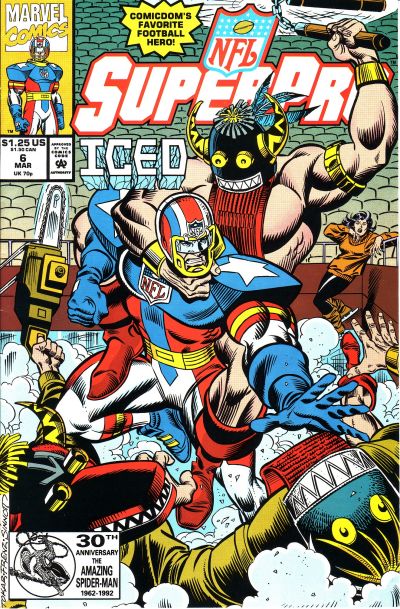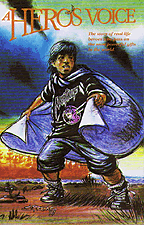The Superhero as Society’s Mirror, From World War II to IraqTwig Johnson, the [Montclair Art] museum’s curator of Native American art, tracked down comic-book representations of American Indians for the show. “When I really started to look, most of the native characters weren’t really Indian characters; it was usually a white kid raised by natives,” she said.
The examples Ms. Johnson found run the gamut from the cringe-inducing to the praiseworthy. A 1992 issue of NFL SuperPro from Marvel depicting villains clad as sacred kachina figures proved offensive to the Hopi tribe; “A Hero’s Voice” (2006), the real-life story of six 19th- and 20th-century tribal leaders, published by the Mille Lacs Band of Chippewa Indians in northern Minnesota, has been popular in elementary schools.Comment: As readers of this blog may recall, I was involved in this exhibit behind the scenes. For one thing, I helped the Montclair's curators obtain many of their Indian comics. For another, the
documentary this article mentions is the one I was interviewed for.





No comments:
Post a Comment
Note: Only a member of this blog may post a comment.